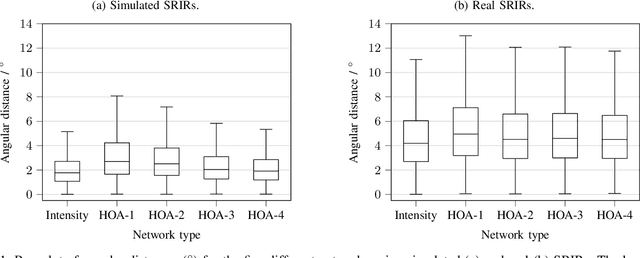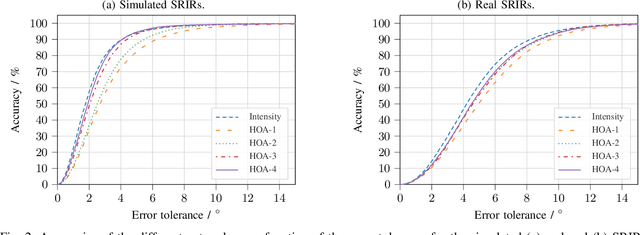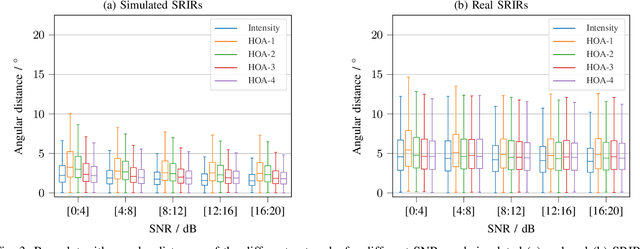Stephan Preihs
Direction of Arrival Estimation of Noisy Speech Using Convolutional Recurrent Neural Networks with Higher-Order Ambisonics Signals
Mar 01, 2021



Abstract:Training convolutional recurrent neural networks on first-order Ambisonics signals is a well-known approach when estimating the direction of arrival for speech/sound signals. In this work, we investigate whether increasing the order of Ambisonics up to the fourth order further improves the estimation performance of convolutional recurrent neural networks. While our results on data based on simulated spatial room impulse responses show that the use of higher Ambisonics orders does have the potential to provide better localization results, no further improvement was shown on data based on real spatial room impulse responses from order two onwards. Rather, it seems to be crucial to extract meaningful features from the raw data. First order features derived from the acoustic intensity vector were superior to pure higher-order magnitude and phase features in almost all scenarios.
 Add to Chrome
Add to Chrome Add to Firefox
Add to Firefox Add to Edge
Add to Edge